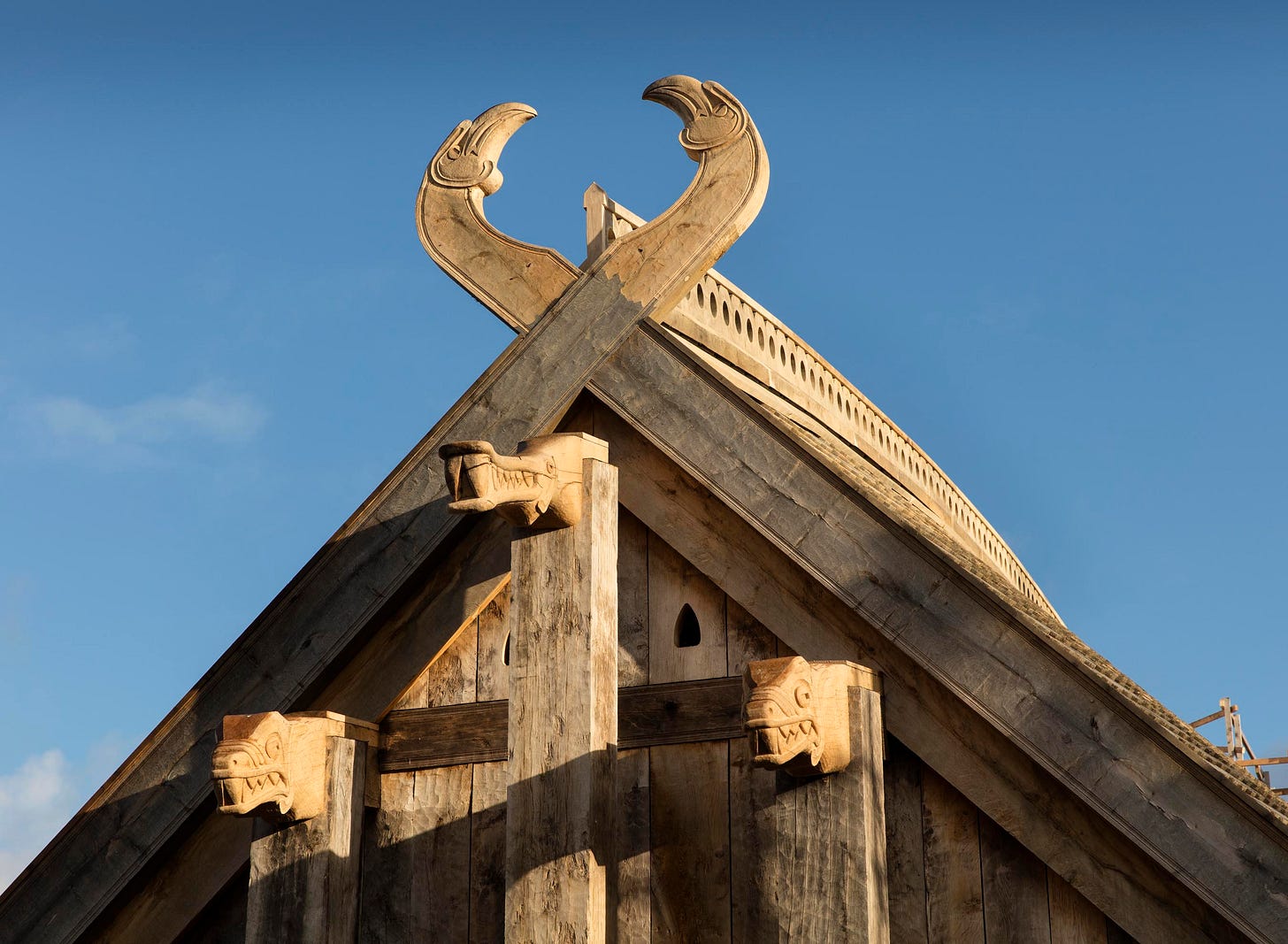Woe is me! These Swedes are bold, despising the Danes.
Behold wild-eyed and grim-faced Geats
pressing upon us with crested helmets1 and resounding spears2.
They wield swords and double-edged axes honed on the whetstone
enacting our doom in blood.
Thus cried the champion Hialti, as Lejre, the seat of the Skjöldung kings, came under attack by the treacherous Hiarthwar. Lejre has long captivated the imaginations of ancient poets, medieval chroniclers, and modern scholars alike. Saxo’s contemporary, Swen Aggesen, marveled at the gulf between the Lejre of legend and the humble village of his own time. He wrote that while Lejre had once “stood as the most famous court of the king, now, near the city of Roskilde, [it] is scarcely inhabited among the meanest of hamlets.” The story of Lejre passed into legend, only to be dismissed for generations by historians as mere myth.
Archaeological excavations have since confirmed that Lejre was, in fact, a dominant and influential center during the Danish Late Iron Age and Viking Period (AD 500–1000). For half a millennium, great timber halls dominated the landscape. Tall structures raised on stone platforms, whitewashed and gabled, gleaming in the distance to passing travellers. Archaeologist Tom Christensen calls them “the very apex of the estate complexes that are presently known”. The Beowulf poet might have said it better: “the best of halls, high and horn-gabled.”
Now, archaeology has uncovered evidence of crested helmets as well. In the spring of 2024, a group of detectorists surveyed a field at Lillebro, just a few hundred metres southwest of the hall complex at Mysselhøjgård, Lejre, a site already known for recent finds from the Late Germanic Iron Age and Viking Age. From the soil, they recovered approximately two-thirds of a spectacular helmet mount in gilded bronze.
Based on its ornamentation, the find is dated to the latter part of the 7th century to the mid-8th century. This was once a richly decorated helmet, comparable in quality and style to the one from grave 7 at Valsgärde and a fragment from Uppåkra. The animal-style decoration is of high craftsmanship, the fittings are gold-plated, and the eyes in the central mask were inlaid with garnets, one of which still remains in place.


Like other helmets from the Late Germanic Iron Age, the helmet from Lejre was fitted with a bronze crest. This is evident from the upper, pin-like section of the central mask, which remains ungilded, likely because it was inserted into the vaulted crest that once arched over the helmet's crown.
A second helmet fragment from the same period was discovered at Gevninge, roughly three kilometers from Lejre. It consists of a gilded eyepiece, cast in bronze.
For a long time, crested helmets had been found only in England, Norway and Sweden. But with the growing popularity of metal detecting, the picture has changed dramatically. Today, we know of at least 18 complete crested helmets, 71 fragments, and ten pressblech dies scattered across Northern Europe.

Cristatis galeis; see also cristis galeam in Aeneid 8:620.
hastisque sonantibus; see also gjallanda geiri in Egill Lv 9 & giellende gár in Widsith.






